We explain why leaves turn yellow and fall off, and what to do about it

Ficus is one of the most popular indoor plants that loves careful care. In case of improper care and various diseases, leaves may curl and fall off.
Ficus species
Ficus plants are plants of the mulberry family. There are more than 2 thousand species, but only about 20 are house plants.
The homeland of ficus trees is the subtropical and tropical forests of Asia and Africa. Plants appeared in Europe in the 17th century. In the wild, these are trees, vines and shrubs that grow well in the sun and heavy rain and can reach up to 20 m in height. Cultivated species in apartments and offices grow up to two meters with proper care.
Ficus benjamina
This is one of the most popular ficus tree species as it is easy to care for. There are tall and dwarf varieties. Can reach up to two meters in height.
The shape and color of the leaves are very different – it all depends on the type of plant. The leaves are alternate, shiny, up to 5–10 cm long, 2–5 cm wide. They can be either green or peach in color with white splashes.
Ficus tolerates pruning well, so the crown can be given any shape, including creating a home bonsai.

Ficus benjamina
Rubber-bearing ficus (Elastica)
It got its name because its juice contains rubber. The plant is popular due to its decorative appearance and sufficient unpretentiousness.
The leaves are oval, 20–30 cm long, 10–20 cm wide, dark green, shiny, leathery, with a pronounced midrib.
With proper care indoors it grows up to two meters, and in nature – up to 30 m. The plant can secrete milky sap – toxic and dangerous for pets.
Ficus lyreformes
It got its name because the leaves resemble a lyre or violin. Indoors it grows up to one and a half meters. The leaves are large, with a wavy edge, dark green, leathery. The bark is rough, brown with a gray tint.
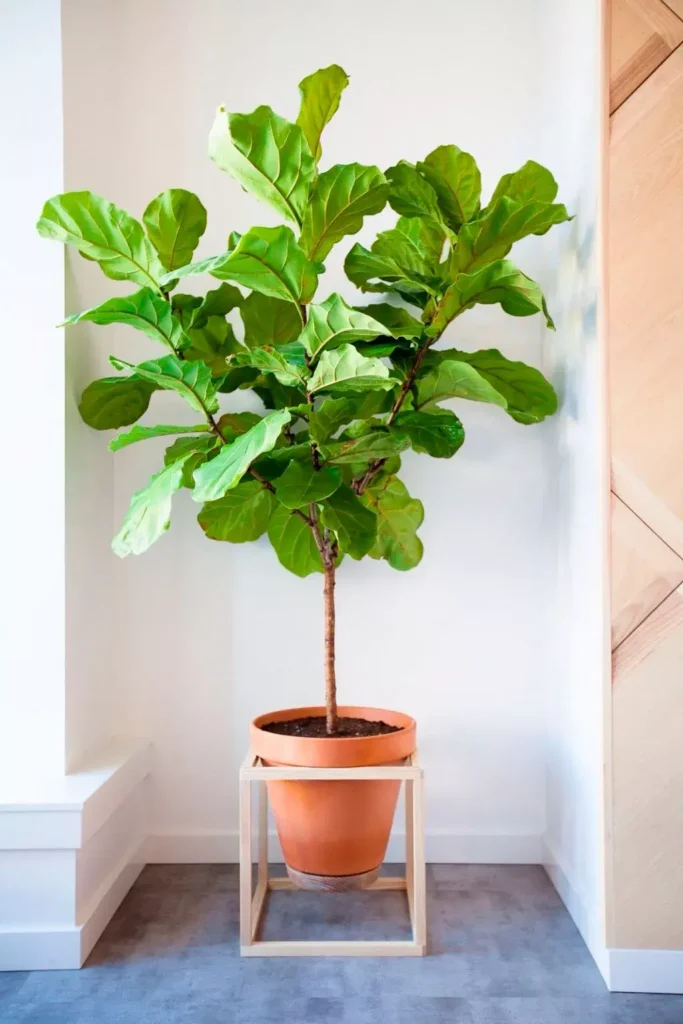
Ficus lyreformes
Ficus bengal
The homeland of the species is India. In nature it grows up to 30–40 cm, has aerial roots that fall to the ground, take root and turn into full-fledged trunks.
The leaves are dense, oval, green with light veins, up to 10–30 cm in length, arranged in a spiral.
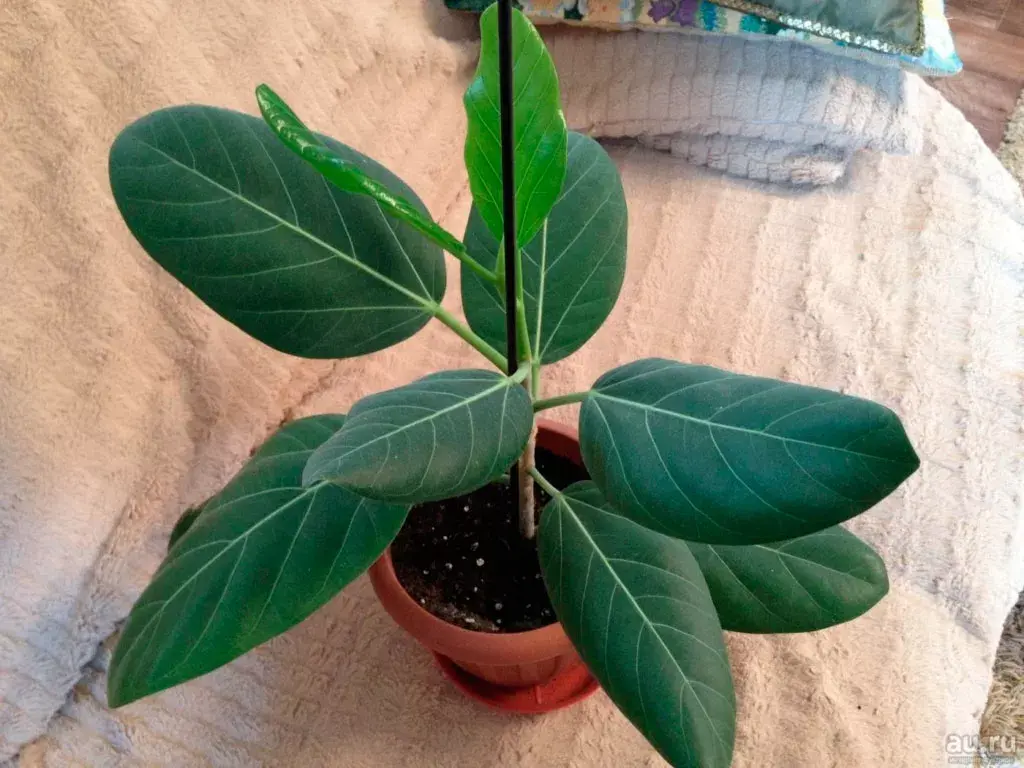
Ficus bengal
Ficus Binnendijka (Ali)
An evergreen crop, has the form of a tree or shrub. In nature it reaches 20 m, and indoors – no more than two meters.
The leaves are narrow, smooth, glossy, up to 20 cm long and up to 4 cm wide, uniformly dark green in color or light gray with white strokes. The bark is dark with light streaks.
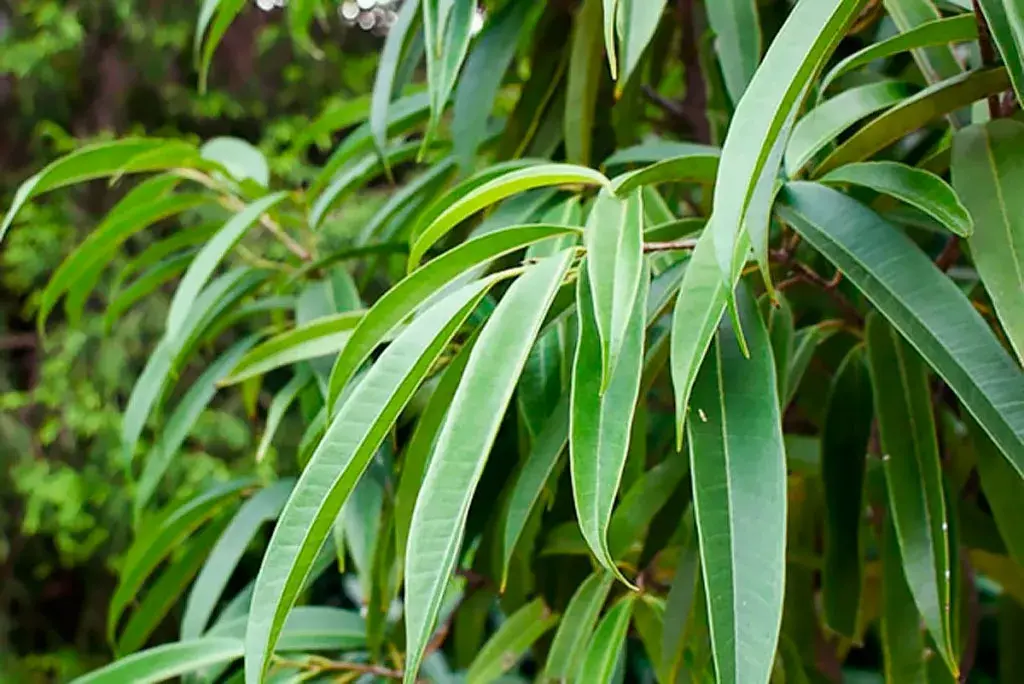
Ficus Binnendiika
How to care for ficus: instructions
All types of ficus love high humidity, moderate temperatures and a large amount of bright indirect light. Ficuses react poorly to changes – they are capricious when moving, prefer to stay in one place, and cannot tolerate drafts and hypothermia.
The conditions for keeping ficus trees depend on the species, but there are general recommendations.
1. Provide indirect sunlight
Ficus plants especially need a lot of light. They require diffused rays for at least six to eight hours a day.
Be sure to rotate the plant regularly so that each side has access to the sun. If the lighting is insufficient, the stem may bend, stretch, and new shoots will develop only on one side.
2. Maintain indoor humidity above 40%
Ficus loves high humidity. For better growth, it is necessary to regularly spray the crown with a spray bottle. Water should be taken at room temperature, settled or filtered.
Arrange “bath days” for the flower: place the pot with the ficus in the bath and pour lukewarm water over the foliage. For species with wide leaves, regular wiping with a damp sponge is suitable. To maintain the required level of humidity, you can place a container of water next to the ficus.
3. Protection from drafts
Ficus is a heat-loving plant: it can lose its leaves due to drafts. The optimal temperature for ficuses is +25 °C. Do not place the pot on a cold windowsill or floor. If the surface is cold, add a thick layer of polystyrene foam – this will save the plant from hypothermia.
4. Treat for pests
The main cause of ficus leaves curling is insects. Ficus trees attract many household pests such as spider mites, mealybugs and thrips. If they appear on the plant, wash it with insecticidal soap.
If the pesticide doesn’t work, try neem oil or other essential oils. In case of severe infestation, it is best to throw the plant away to prevent it from infecting other indoor plants.
5. Fertilize once a month from April to September
With a lack of fertilizers, the ficus begins to hurt and dry out. At the same time, the plant does not need frequent feeding. In the spring, during the period of active growth, when the ficus is gaining green mass, nitrogen is added. During the dormant period, preference is given to phosphorus and potassium, and nitrogen is excluded. In the autumn-winter period, ficus is not fed.

As mineral fertilizers, use urea, saltpeter, complex universal mixtures for deciduous crops and special fertilizers for palm trees and ficus trees.
Ficus most often stays in one flower pot for a long time, so it is necessary to periodically add organic matter. Suitable tinctures of green manure, such as nettles, legumes, manure or humus, compost, various recipes using eggshells, tea and coffee brews, and banana peels.
6. Keep the plant away from pets
All types of ficus that secrete milky sap are poisonous. These include: ficus benjamina, elastica and robusta. Plants are dangerous to animals and people when eaten. It is best to keep them away from children, dogs and cats at all times.
How to water a ficus
There is no clear watering scheme. Be guided by the degree of drying of the soil – it should not dry out to the point of a coma. If the top layer has dried out by two centimeters, the plant needs watering. The degree of drying of the soil can be determined by touch with your finger.
Overmoistening of the soil is also dangerous, especially in the cool season. In soil that is too wet and cold, the roots and base of the stem rot. During colder months, it is best to reduce watering and allow the top layer of soil to dry completely before watering.
To determine whether a plant needs water or not, keep an eye on the leaves. Inward curled leaves and dry soil indicate a lack of water. There is too much leaf fall and wet soil.
After watering, when excess moisture drains into the pan, pour out the excess water. The amount of watering depends on the type of ficus: dwarf and ampelous, climbing species require more abundant watering. The rubber plant does not like waterlogging. In ficus benjamina, if the soil is excessively wet, the roots can rot, so you need to dry it well before the next watering.

How to care for ficus in winter
Caring for ficus in winter is different from summer. Most often, during the cold season, ficuses lose their decorative appearance due to low air humidity, exposure to cold, sudden temperature fluctuations and lack of light.
Avoid exposure to cold
Keep the ficus away from cold glass, window sill, floor and cold air from an open window or door. Do not place the ficus next to the door to the balcony: even short-term exposure to a cold air stream causes leaf fall in the heat-loving plant.
In cold soil, ficus roots begin to hurt, rot and may freeze. To protect the roots, place a piece of felt or foam under the pot, and wrap the pot with a woolen scarf or other heat-insulating material.
If you need to open the window, move the ficus further away or remove it from the window while the room is ventilated, so that a sudden change in temperature does not cause the leaves to fall off.
Take care of additional lighting
To prevent the plant from experiencing a lack of lighting, move the ficus to a brighter place or turn on a fluorescent or phytolamp above it. With a lack of light, ficus leaves turn pale, lose their varietal color, and the shoots stretch and bend.
Water with warm water
To prevent the plant’s roots from experiencing stress from ice-cold tap water, water your ficus in winter with water at room temperature. Fill a bottle of water in advance and place it open near the radiator for a day so that the liquid warms up and the chlorine evaporates from it.
Humidify the air
Regularly spray the flower with a spray bottle, wipe the leaves with a damp sponge, and wash in the shower. To increase air humidity, curtain the battery next to the ficus with a wet towel, and place containers of water next to the pot.
Due to dry air, ficus leaves begin to curl, dry spots appear on them along the edges and on the tips, and they fall off prematurely.
Don’t fertilize
In winter, ficus trees are not fertilized, as the plant is dormant. If you add fertilizer, the ficus, due to lack of light and heat, will not be able to absorb nutrients from the soil, and the roots may rot.
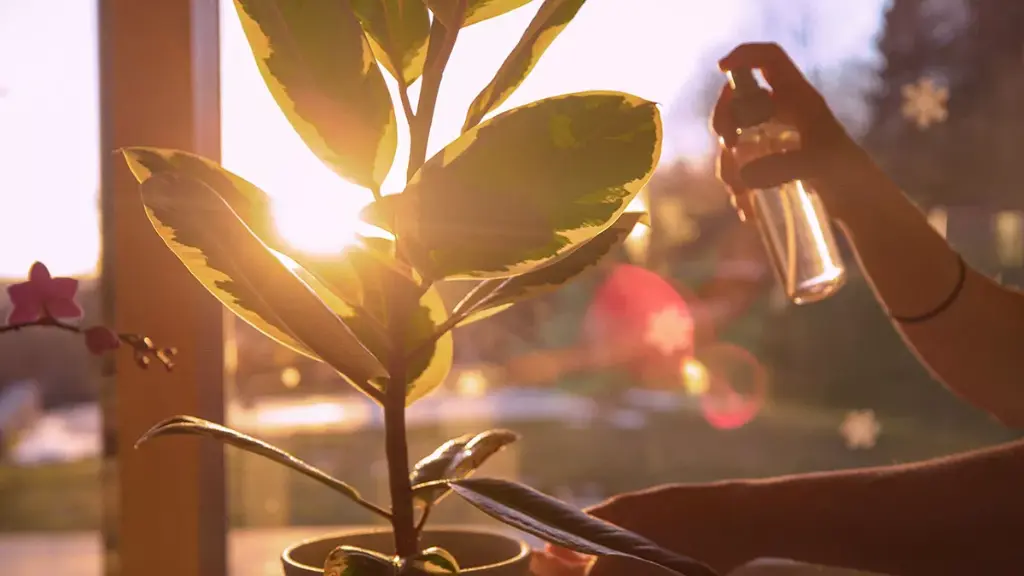
How to trim ficus
Ficus needs to be pruned periodically. The reasons may be different:
- for rejuvenation, so that the ficus is renewed;
- for prevention – remove dry and diseased parts;
- to form a lush crown or a certain shape.
If the goal is crown formation or rejuvenation, then the plant should be pruned in the spring, mainly in March. In winter and autumn, pruning is not recommended. The exception is ficus disease or infection. In this case, we cut off diseased and dried shoots. After transplantation, the plant can be pruned after two weeks.
For pruning, be sure to use sterile and sharp tools: treat garden shears, a knife or pruning shears with alcohol.
When pruning young branches, the cut is made even; if the shoots are old, then beveled. Be sure to treat all pruning areas with activated carbon so that the ficus does not catch an infection and inflammatory processes do not begin.
Remove dry branches first, then proceed to create the desired shape. There are several types of crowns that can be formed by pruning a ficus: bush, spiral, arc, fence and braid. Some types of ficus are used as a basis for bonsai.

Ficus bonsai at home
How to propagate ficus
There are four options for propagating ficus: leaves, seeds, cuttings and layering.
Leaf
A new plant is grown from large leaves that are not damaged by disease or infection.
To make the roots begin to form faster, remove unnecessary juice – rinse the leaf with water or blot with a clean cloth. Gently twist and tie with thread, and then push shallowly into the soil. The shoot will take root in the soil in three or four weeks. The air temperature must be at least +27 °C.
Seeds
Seeds for ficus must be purchased in the store – it will not be possible to grow ficus from home. What many people mistake for seeds are actually berry inflorescences. Pollinating insects are required to produce seeds.
Before sowing, treat the seeds with a growth stimulator or “Fungicide” to get rid of fungus and spores. For growing ficus, a mixture of peat and peat moss or a mixture of humus and sand in a two to one ratio is suitable. Before planting, the soil must be disinfected with steam for sterilization.
A flat container is suitable for sowing; it can be easily covered with film and it is easier to track the sprouts in it. The seeds are placed on moist soil at a short distance from each other. The soil should be sprayed during germination to keep it slightly moist.
When the seeds germinate and shoot leaves appear, they can be transplanted into a flower pot at a short distance from each other.
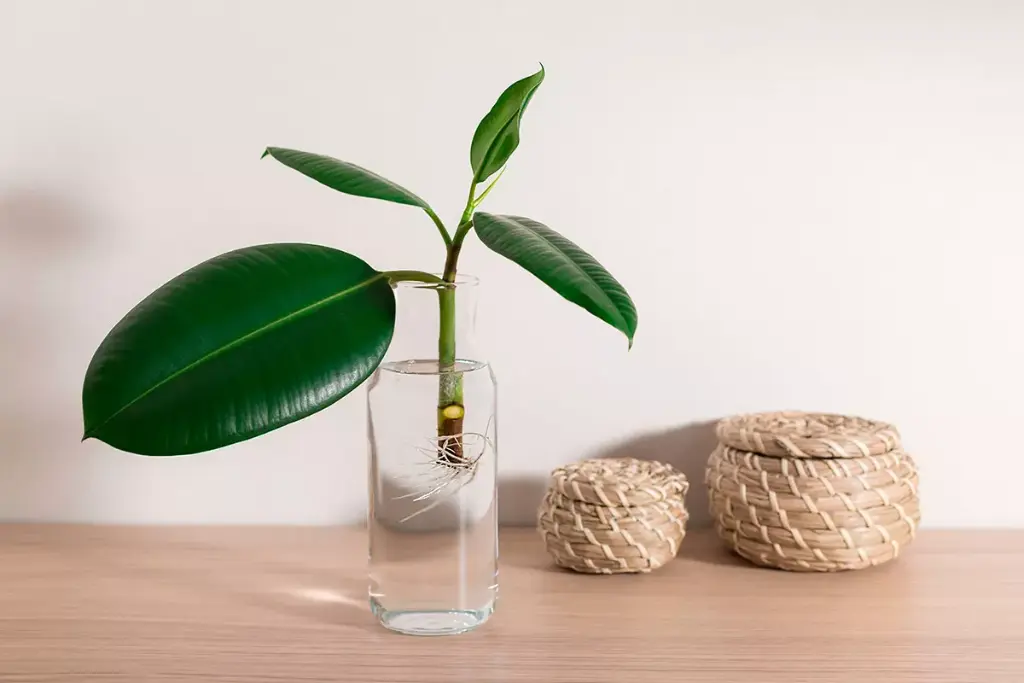
Cuttings
The method is suitable for plants older than two years. Cut a cutting from the top of the ficus to a length of ten to fifteen centimeters. The cut should be made at an angle, this will make it easier for the shoot to absorb moisture.
Four to five leaves are enough for a seedling; carefully remove the excess ones. Rinse the shoot from the juice with warm water, let it dry and make a cross-shaped notch at the bottom for quick appearance of roots.
Place the cuttings in a container of water in a warm place. When roots and young leaves appear on the seedling, plant it in soil made of peat and sand. Cover with a plastic cap or glass jar for a week to maintain the temperature above 24 degrees, then acclimate to room conditions. Spray the leaves and water the plant itself.
Drains
Find a long shoot at least 50 cm long and remove the leaves from the part of the stem where you want to get cuttings. Next, use a sharp blade to make two cuts on the trunk at intervals of 3 cm and remove the “bark” between them. Treat the incision site with a growth stimulator and wrap it in a layer of moss, securing it with cling film. The moss must be pre-moistened.
When the roots appear from the film and entwine the moss, cut the seedling from the mother plant below the lump of moss and plant it in soil without the film.



